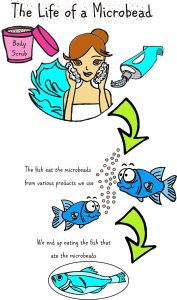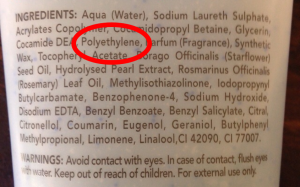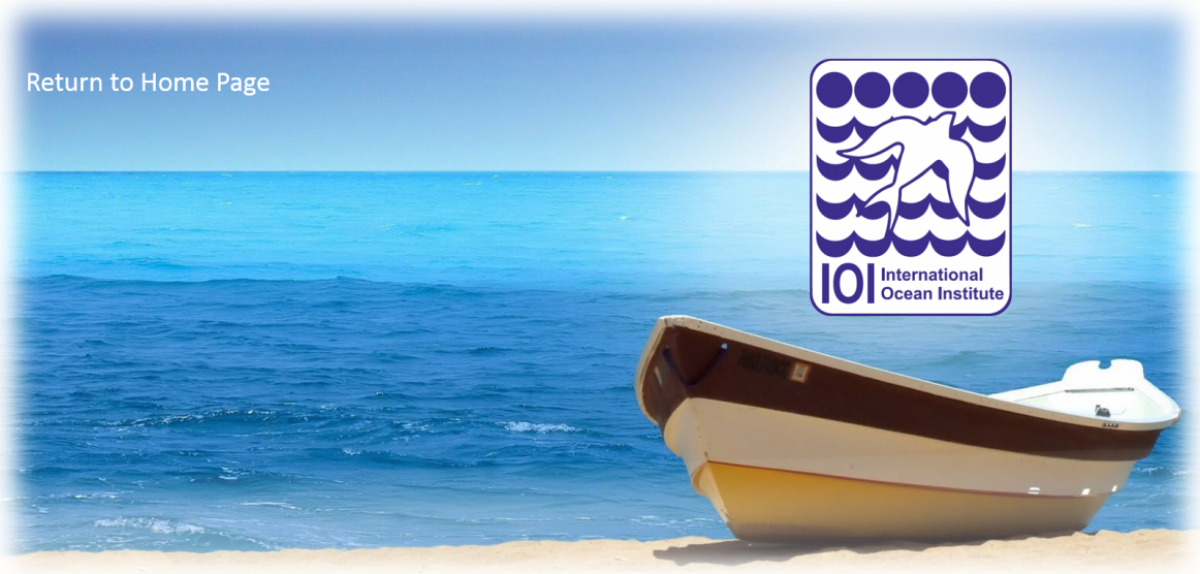 Tiny particles of plastic have been added to possibly thousands of personal care products sold around the world. These microbeads, hardly visible to the naked eye, flow straight from the bathroom drain into the sewer system. Wastewater treatment plants are not designed to filter out microbeads and that is the main reason why, ultimately, they contribute to the Plastic Soup swirling around the world’s oceans. Sea creatures absorb or eat microbeads. These microbeads are passed along the marine food chain. Since humans are ultimately at the top of this food chain, it is likely that we are also absorbing microbeads from the food we eat. Microbeads are not biodegradable and once they enter the marine environment, they are impossible to remove.
Tiny particles of plastic have been added to possibly thousands of personal care products sold around the world. These microbeads, hardly visible to the naked eye, flow straight from the bathroom drain into the sewer system. Wastewater treatment plants are not designed to filter out microbeads and that is the main reason why, ultimately, they contribute to the Plastic Soup swirling around the world’s oceans. Sea creatures absorb or eat microbeads. These microbeads are passed along the marine food chain. Since humans are ultimately at the top of this food chain, it is likely that we are also absorbing microbeads from the food we eat. Microbeads are not biodegradable and once they enter the marine environment, they are impossible to remove.
Positive action on behalf of manufacturers has meant that more and more of these microbeads are being removed from personal care prod ucts and replaced by naturally biodegradable alternatives. The International Ocean Institute – Southern Africa is committed to creating awareness around this issue and working towards a ban of microbeads in personal care products in South Africa.
ucts and replaced by naturally biodegradable alternatives. The International Ocean Institute – Southern Africa is committed to creating awareness around this issue and working towards a ban of microbeads in personal care products in South Africa.
Support a Ban on Microbeads in South Africa by signing the petition here.
Micropl astics contribute to the “plastic soup” that affects all parts of the ocean. The tiny pieces of plastic get mistaken for food by zooplankton and then the zooplankton gets eaten by a small fish and the small fish gets eaten by a big fish which then gets caught by a fisher and lands on your plate – plastic included. The microplastics get scooped up in the gaping mouths of whales or filtered through the gills of mussels and sucked in by anemones. It won’t surprise you that there is no nutritional value to plastic, but, did you know that some of the dyes used are toxic? Not only that, but plastic absorbs toxins like DDT and so the plastic becomes many times more toxic than that water that surrounds it (and this gets in to the meat of the fish that you eat!)
astics contribute to the “plastic soup” that affects all parts of the ocean. The tiny pieces of plastic get mistaken for food by zooplankton and then the zooplankton gets eaten by a small fish and the small fish gets eaten by a big fish which then gets caught by a fisher and lands on your plate – plastic included. The microplastics get scooped up in the gaping mouths of whales or filtered through the gills of mussels and sucked in by anemones. It won’t surprise you that there is no nutritional value to plastic, but, did you know that some of the dyes used are toxic? Not only that, but plastic absorbs toxins like DDT and so the plastic becomes many times more toxic than that water that surrounds it (and this gets in to the meat of the fish that you eat!)
How can you tell if there are microplastics in your product? Keep a look out for the ingredients below and if you find them in your usual purchases, try something else or (better yet) tell the manufacturer to stop using plastic in their products.
Check ingredients for these sneaky microplastics:
- Polyethylene (PE)
- Polypropylene (PP)
- Nylon
- Polymethyl Methacrylate (PMMA)
- Polythylene Terphthalate (PET)
Plastic has no place in your beauty and hygiene routines and the solution seems simple to me – don’t use personal care products that include plastic. You don’t have to even go without your scrubs because there are natural alternatives. Please tell everyone so that no one will be unwittingly washing microplastics down their drains.
